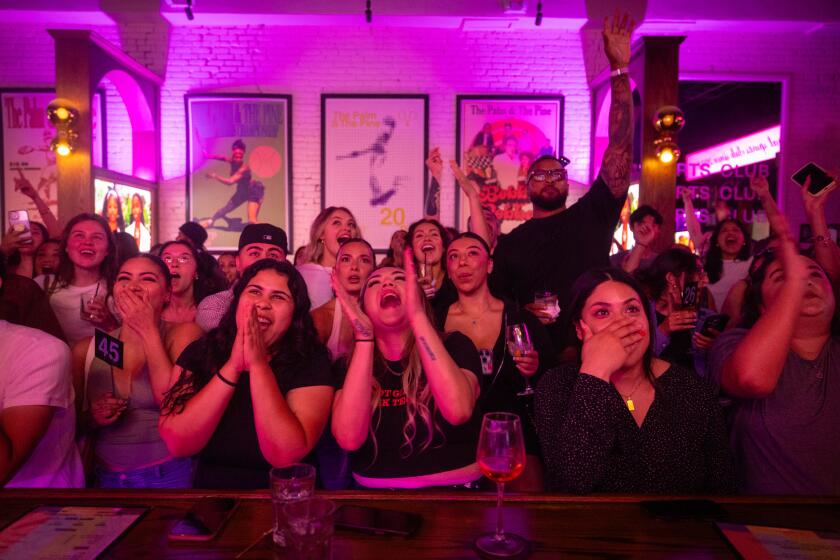Joshua Tree shows off its piece of the super bloom, eclipsing its winter woes
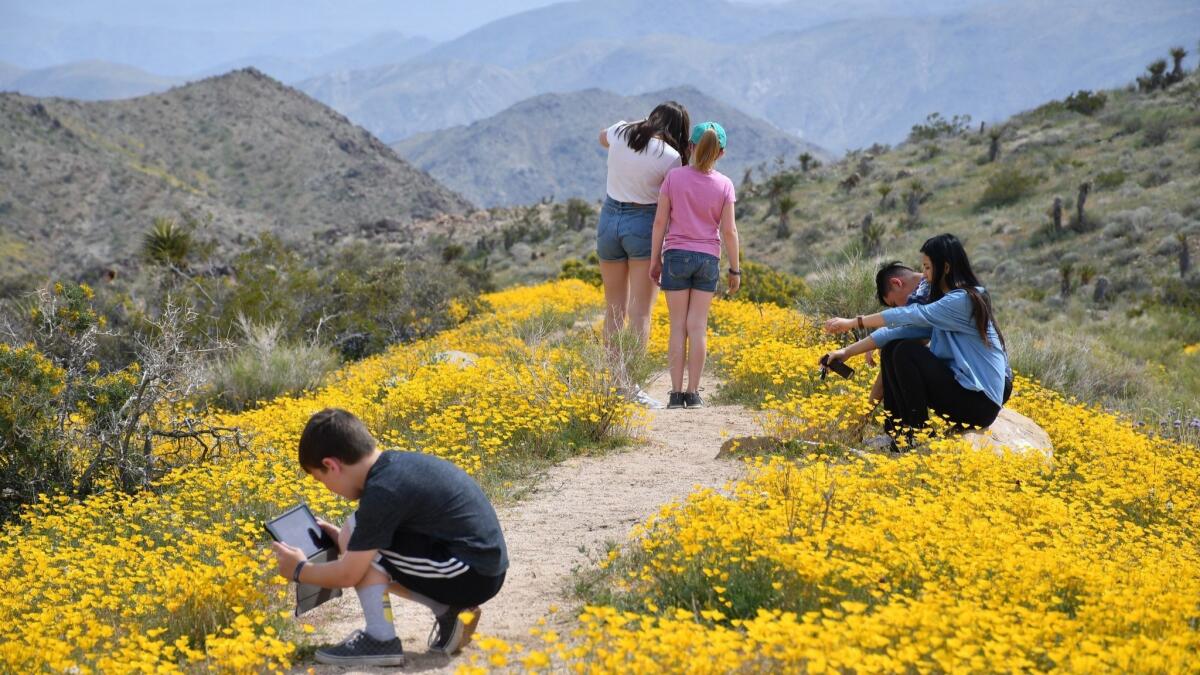
- Share via
Spring has given Joshua Tree National Park its own piece of the super bloom, bringing not only wildflowers but also big, white blossoms on the Joshua trees.
I grabbed these shots on a 24-hour visit March 26 and 27, sharing the trails with flower people and the park’s usual spring rush of rock climbers and families on vacation.
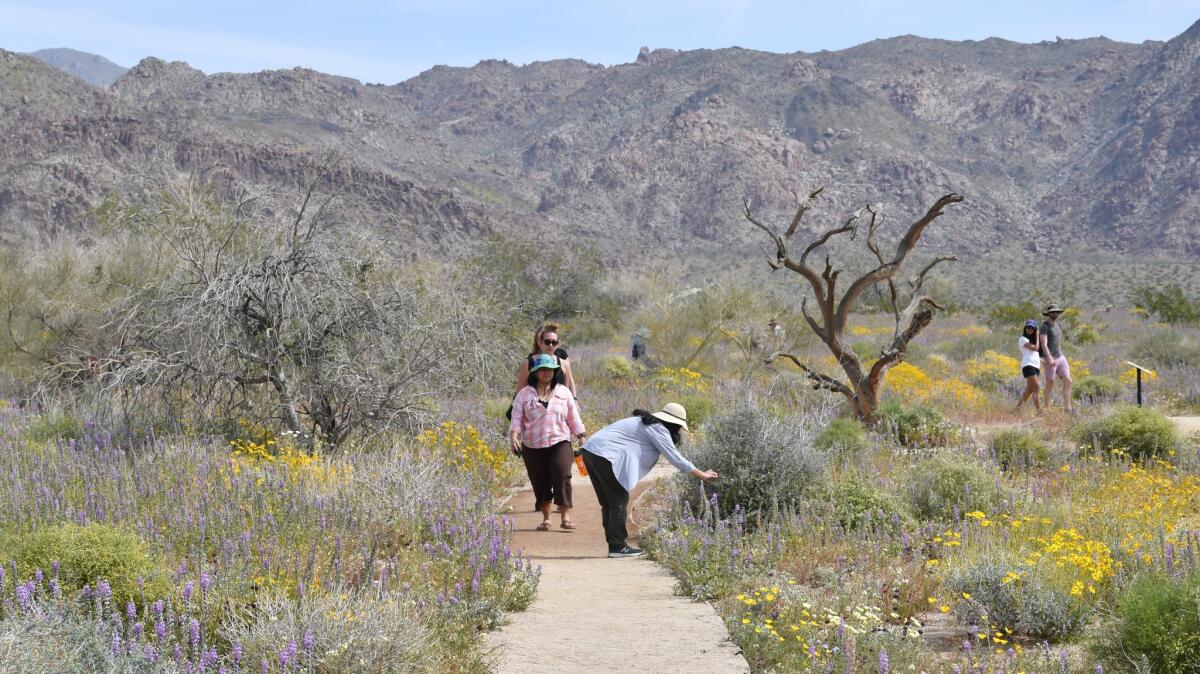
Where is the damage from all the things that went wrong during last winter’s partial government shutdown? Invisible to most visitors.
Traces remain, rangers say, as a result of a park that was open but largely untended. But thanks to a few rainy months and many community volunteers who stepped up to clean the place in late December and much of January, most visitors now see only gorgeous spring scenery and many other visitors.
In the end, park spokesman George Land said, the total number of Joshua trees known to have been killed as a result of the 35-day federal shutdown, which ended Jan. 25, is probably zero or one.
It’s fairly easy to find a dead Joshua tree in the park, but that’s part of the usual cycle. Another story on the park is scheduled for April 14 in the print Travel section.
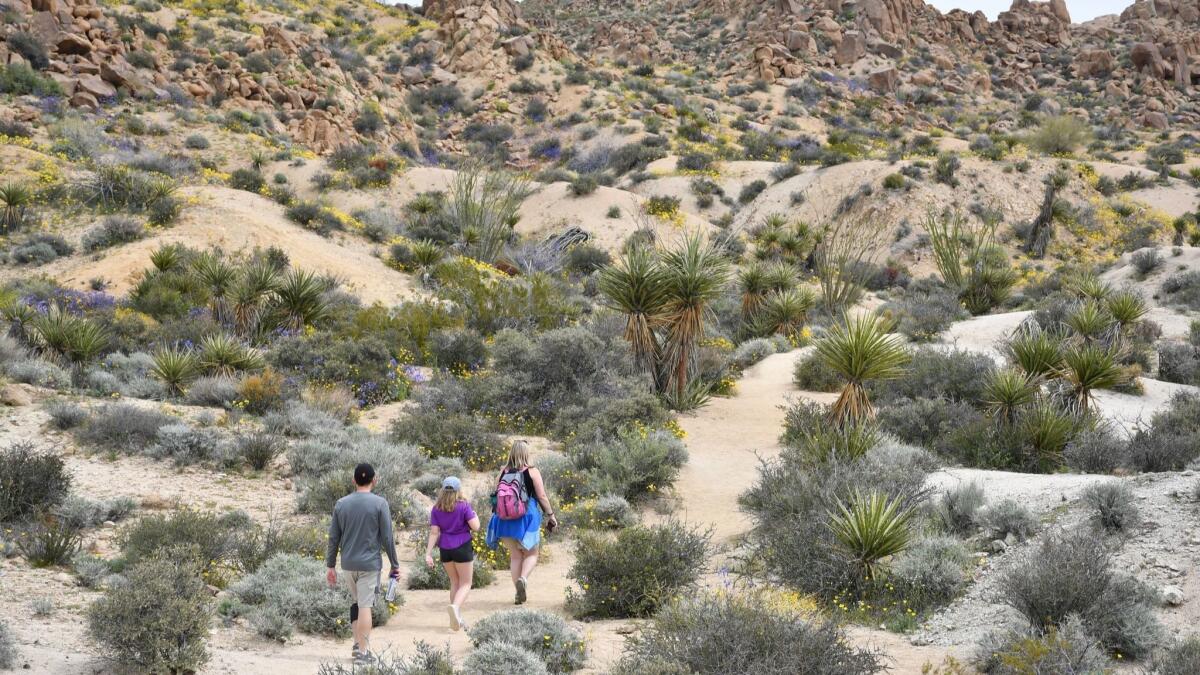
I started around noon at the south end of the park, at Cottonwood Visitor Center at Pinto Basin Road. Yes, I carried lots of water and sunscreen, dressed in layers and stepped carefully.
For further hints on how not to behave in the park, consult the Instagram account JoshuaTreeHatesYou.
Because this area is at lower elevation, it got the wildflower blooms first. It was about 70 degrees, basically a perfect early spring day.
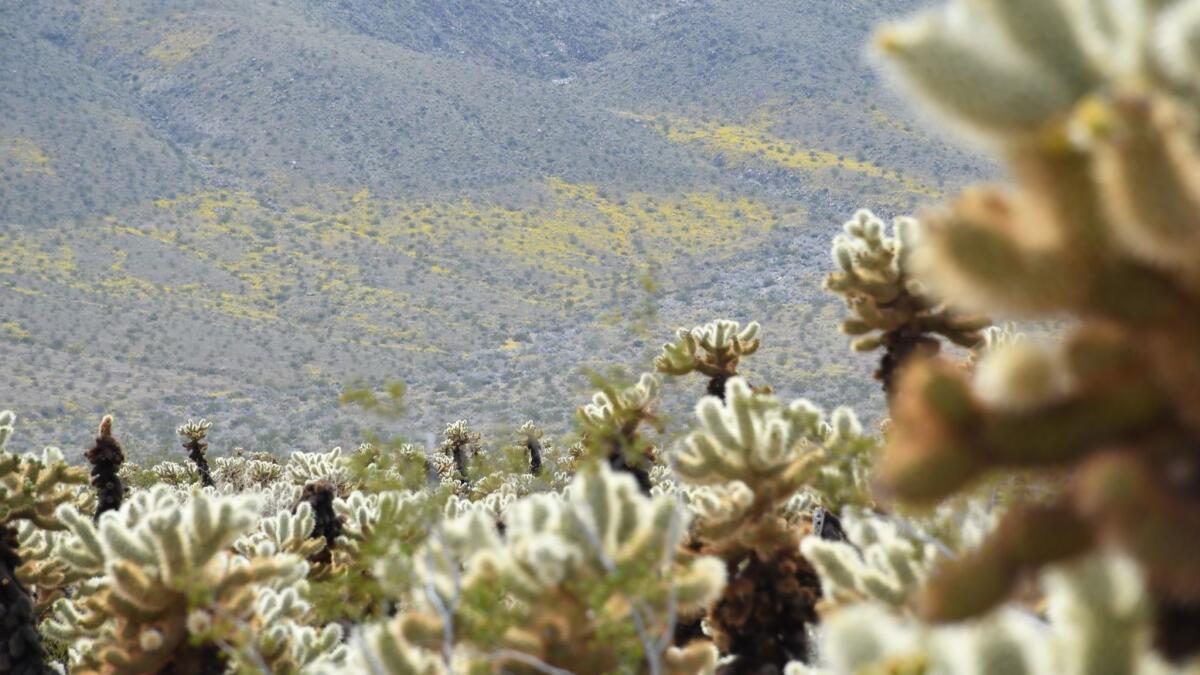
As I gained in altitude and reached the middle regions of the park, I saw fewer yellow and blue blooms, more granite and legions of Joshua trees.
Their blossoms were out in force — white eruptions about the size of your head, with a texture like popcorn on a stick.
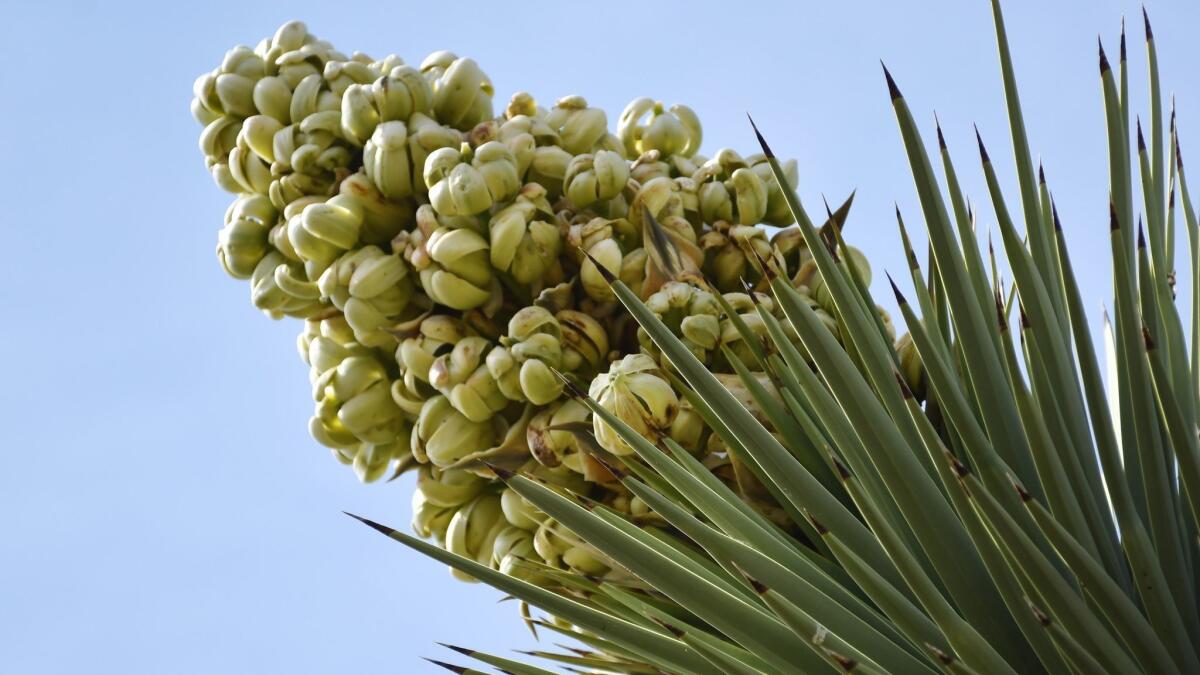
In the minutes before sunset on that first day, I climbed a rocky hill a few miles south of the park’s main entrance — in the town of Joshua Tree — and watched the shadows lengthen.
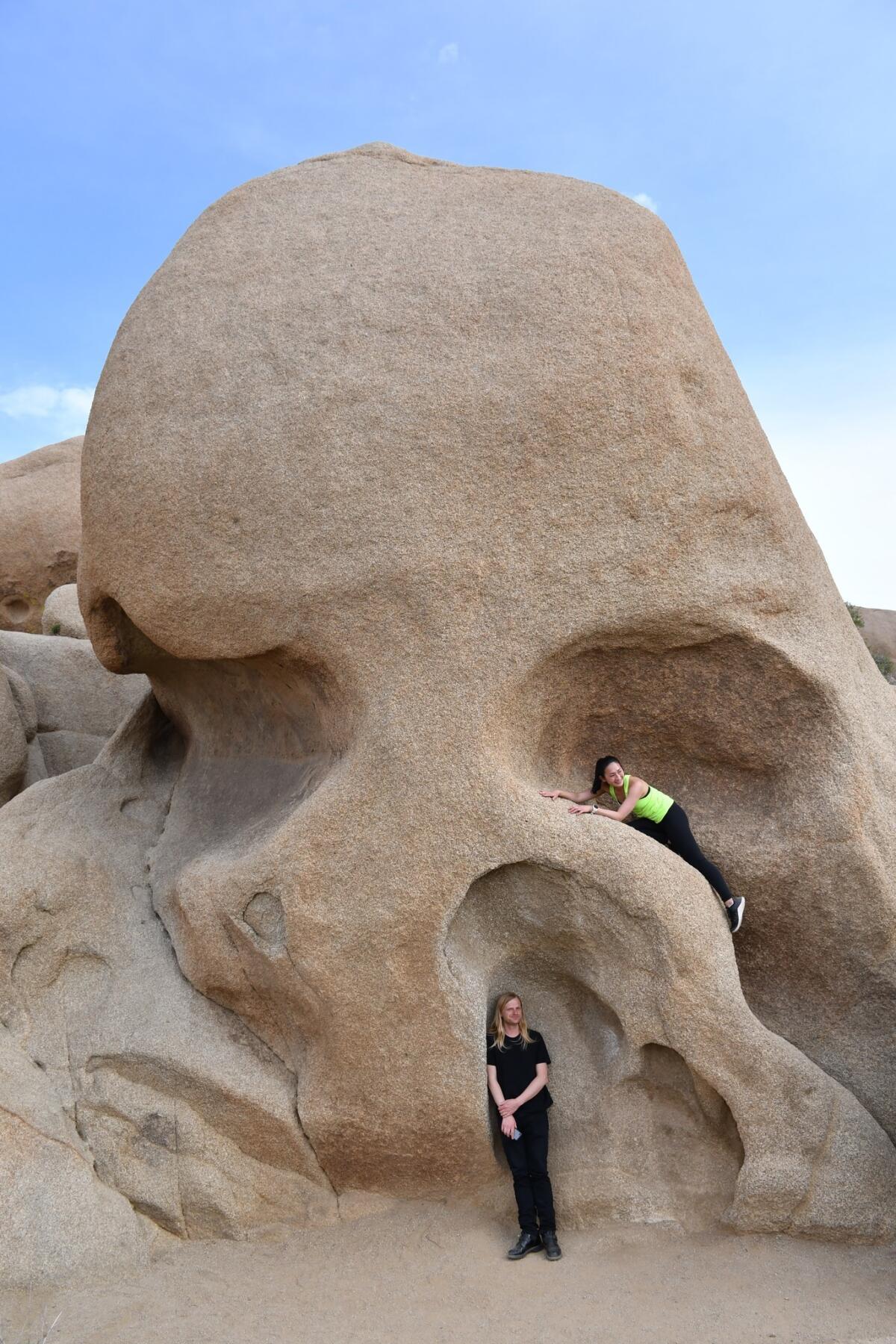
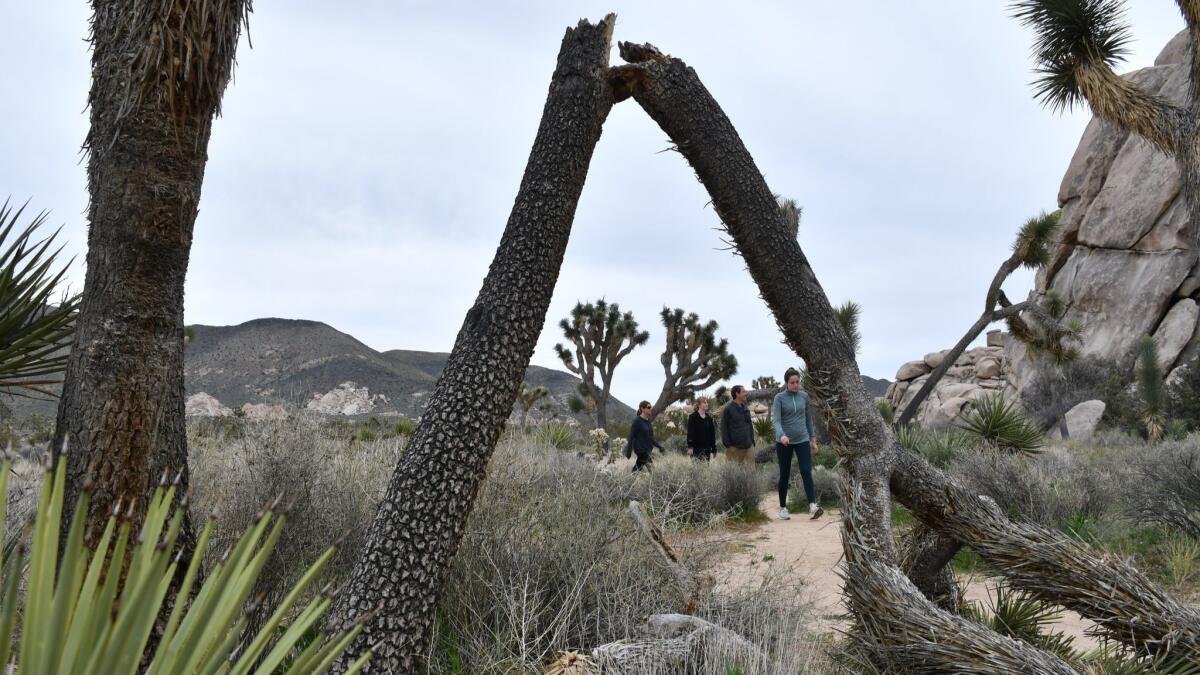
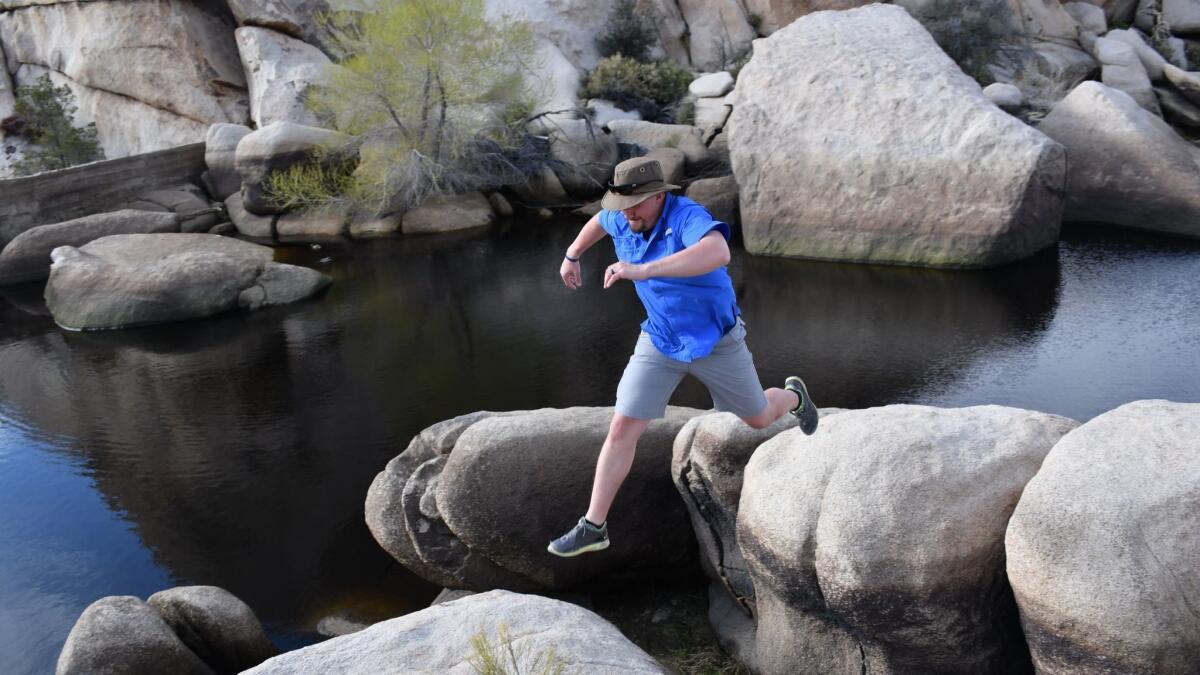
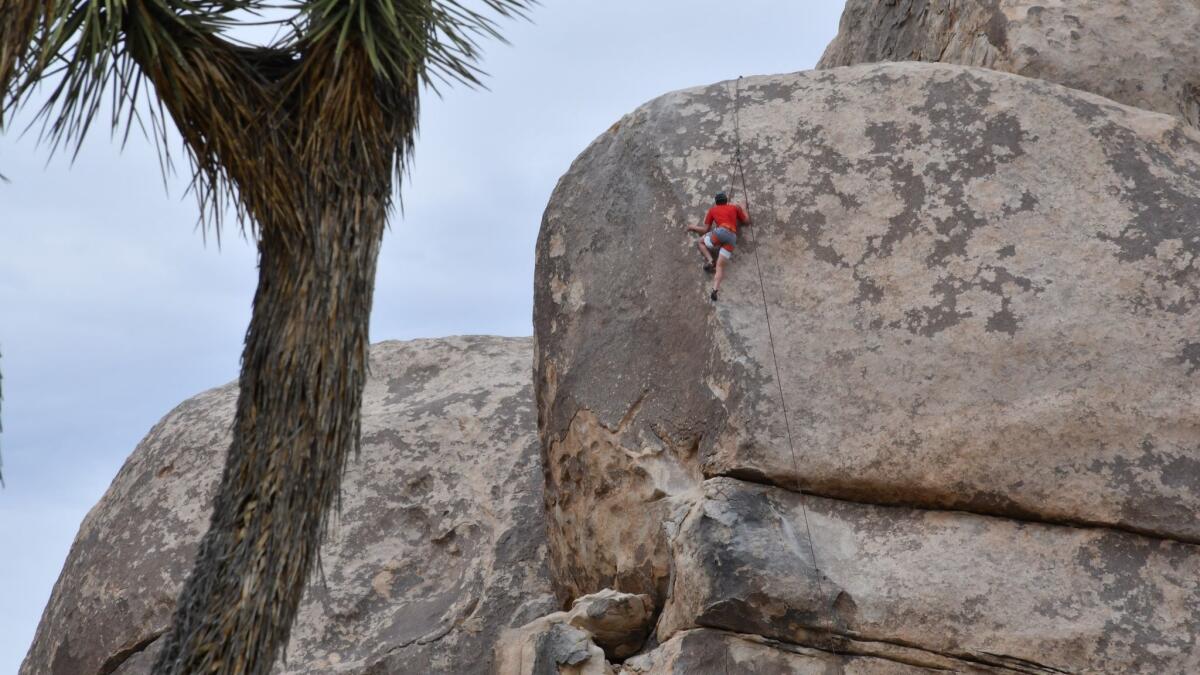
The next morning, after a night in a Joshua Tree motel, I returned to the park by way of its northern entrance, in Twentynine Palms, roamed over to Cap Rock (locally famed for its Gram Parsons connection), then stopped by Hidden Valley. All the campsites were spoken for, and had been for weeks, rangers said.
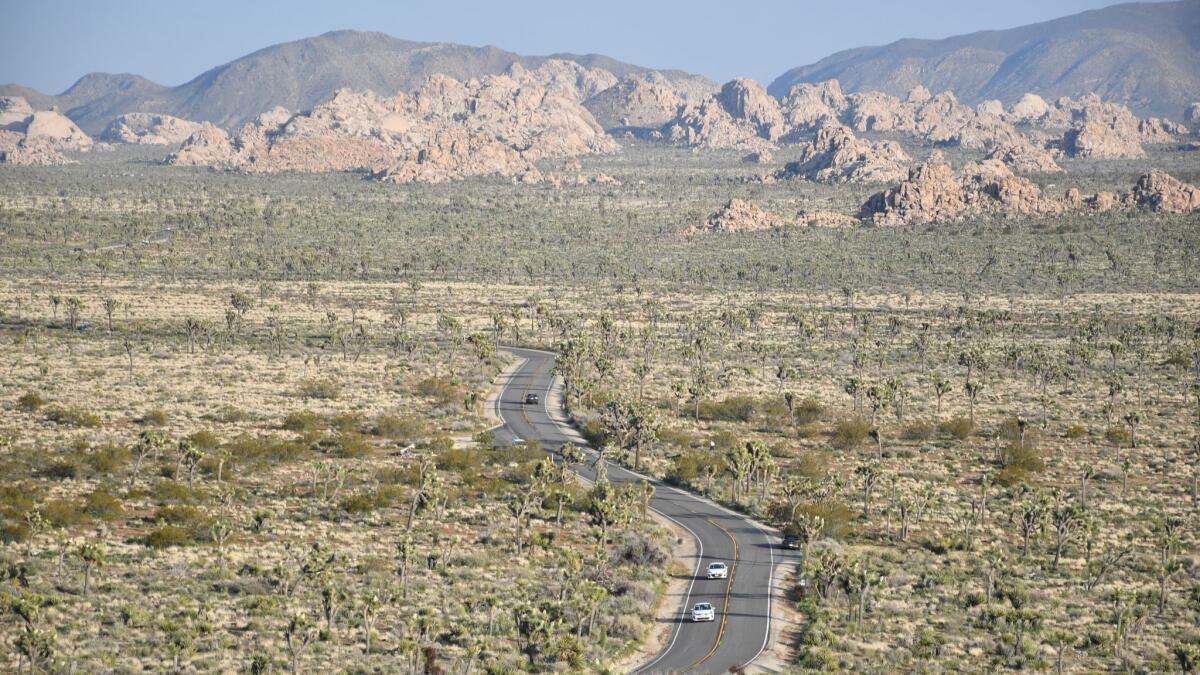
I left a little after noon — almost exactly 24 hours after arriving — by way of the main entrance.
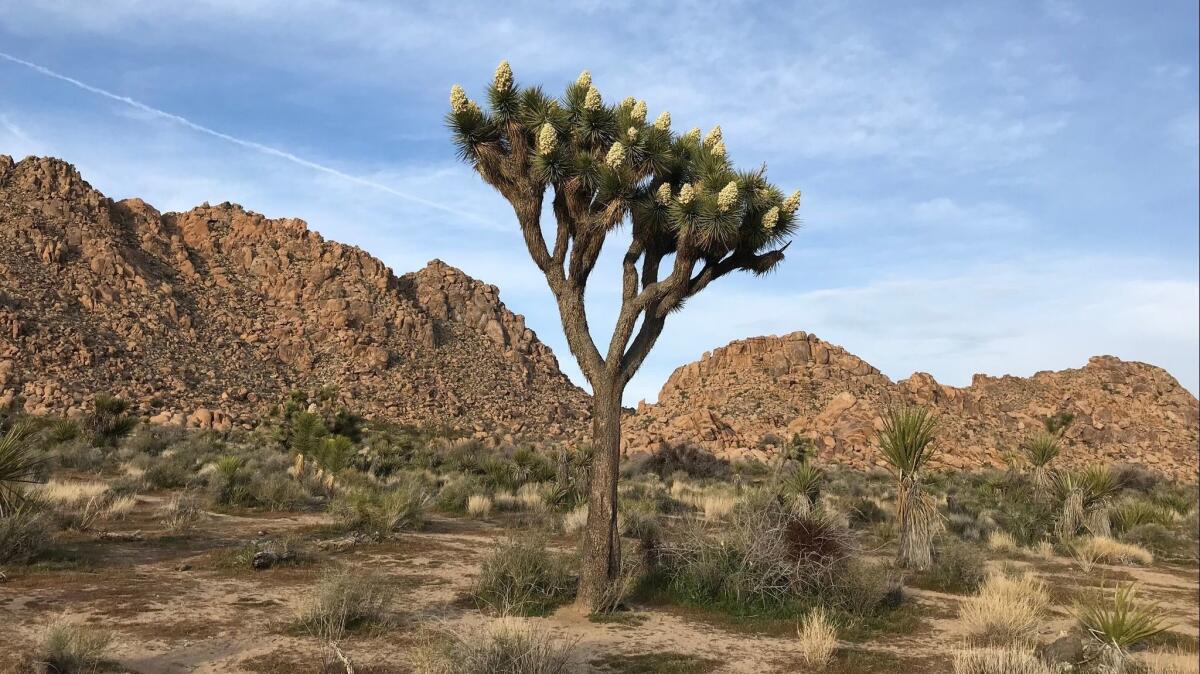
christopher.reynolds@latimes.com
Twitter: @MrCSReynolds
More to Read
Sign up for The Wild
We’ll help you find the best places to hike, bike and run, as well as the perfect silent spots for meditation and yoga.
You may occasionally receive promotional content from the Los Angeles Times.





